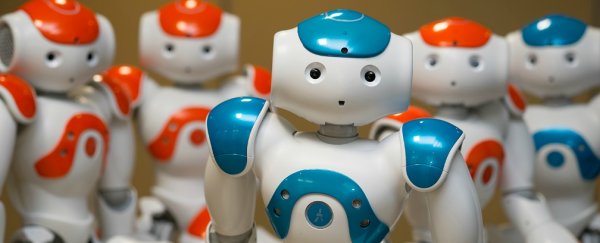Two schools in South Australia have welcomed a set of NAO robots into their classrooms, in an attempt to figure out how artificial intelligence can be effectively incorporated into the Australian curriculum.
The three-year research project is being run by Swinburne University of Technology in Melbourne and aims to identify ways that robots might both help and distract students, so that they can establish guidelines for their educational use in the future.
"Robots are becoming a part of society," lead researcher Therese Keane said in a press release. "It is the responsibility of Australian schools to prepare their students with the skills needed for the future."
While robots have occasionally been used in classrooms before, no research has been conducted on whether or not they actually assist teachers and students.
This project aims to change that by placing a set of NAO robots in two different schools, and then having the teachers complete regular online surveys about their interactions. But, no, the robots won't be leading the classroom as some kind of high-tech teaching machine – the researchers are more interested in how the bots can be used to engage students in activities and help them learn new skills, such as coding.
"Coding has been identified as a necessary skill for the next-generation of workers. These robots give the students an accessible and fun way to practice and improve their coding skills," said Keane. "One of the key features of the NAO robots is that they can be programmed to talk, dance and move around by the students using software on the computer."
In fact, you can see them doing just that below in this video of the NAO robots rocking out to Bruce Springsteen:
The researchers hope that capabilities such as this will help students engage more closely with the world of programming and coding, and potentially even inspire them to find out more about how artificial intelligence works.
"Through the three year research program, we hope to identify the 'best practice' way that robots can be implemented into school curriculums. We want the robots to improve classroom learning, not simply be a novelty or distraction," said Keane.
We have to admit, we're kind of jealous of the students of the future. The coolest thing we had at school was "Where in the World is Carmen Sandiego?", and we usually had to share a computer with some other kids while playing it. We say bring on the brave new world of education! Let's just hope the kids are nice to the bots.
Love technology? Find out more about the ground-breaking research happening at Swinburne.
